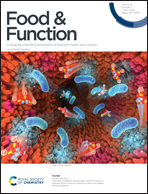Screening, separation and identification of metal-chelating peptides for nutritional, cosmetics and pharmaceutical applications
Abstract
Metal-chelating peptides, which form metal–peptide coordination complexes with various metal ions, can be used as biofunctional ingredients notably to enhance human health and prevent diseases. This review aims to discuss recent insights into food-derived metal-chelating peptides, the strategies set up for their discovery, their study, and identification. After understanding the overall properties of metal-chelating peptides, their production from food-derived protein sources and their potential applications will be discussed, particularly in nutritional, cosmetics and pharmaceutical fields. In addition, the review provides an overview of the last decades of progress in discovering food-derived metal-chelating peptides, addressing several screening, separation and identification methodologies. Furthermore, it emphasizes the methods used to assess peptide–metal interaction, allowing for better understanding of chemical and thermodynamic parameters associated with the formation of peptide–metal coordination complexes, as well as the specific amino acid residues that play important roles in the metal ion coordination.

- This article is part of the themed collection: Food & Function Review Articles 2024


 Please wait while we load your content...
Please wait while we load your content...